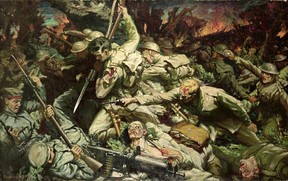 The vast majority of ghostly reports from Mametz Wood concerns the sensation of being watched.
The vast majority of ghostly reports from Mametz Wood concerns the sensation of being watched.
People walking from Flatiron Cemetery, along the track before the trees, up to the Red Dragon monument find themselves feeling uneasy.
Even those who know nothing of the history, in this particular spot, gain the sense that dozens of eyes are charting their every step.
Of course, that's precisely what would have happened there in July 1916. The Lehr Infantry Regiment were watching from the trees. Their machine guns were at the ready. These men were known to be a formidable enemy, but they were also very human. Their fear and discomfort amongst the trees would have been palpable.
It wasn't only the Welsh who died at Mametz Wood. The Lehr-Infanterie-Regiment was left in such tatters that it couldn't be deployed again until September 1916, when fresh German conscripts had replenished its ranks and been trained to fight.
But for the Welsh Division coming, there was the reality of being sitting ducks out in that field and on that track. For most of them, this was their first taste of war, as their regiments had only recently been created by Prime Minister David Lloyd-George.
While the Germans were battle-hardened and weary, the Welsh were suffering the shock of arriving fresh from their native valleys. This was supposed to be full of honor and glory. Instead they'd had their leader, Major General Ivor Philipps, relieved of command under the slur that his Welsh Division wasn't 'determined' enough, because they hadn't taken the woods on day one.
Filled with shame, guilt and the injustice of it all, the Welsh were forced to clamber over the bodies of those who'd died on every day of the assault previously. Right into the German machine gunfire.
Meanwhile the Germans were also living with the sight and close proximity of all those Celtic dead. Teutonic eyes spent days staring out over the corpses, knowing that they'd have to add to the piles or be killed themselves.
Until the Welsh finally broke through, then it was hand-to-hand combat with fixed bayonets, daggers and point-blank gunfire.
Such high emotion, from both sides, can leave residual energy in the atmosphere. It is almost certainly this which modern day visitors to Mametz Wood are feeling.
Is the Lehr Infantry Regiment still watching? Probably not, but it feels like they are. At least to anyone with an ounce of clair-sentience in their soul.





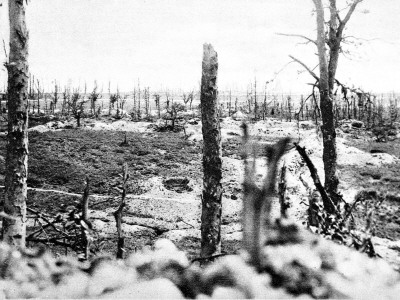




 The experiences of Orpen and Joffroy seem indicative of many reports from the woods and copses around the Somme Battlefield.
The experiences of Orpen and Joffroy seem indicative of many reports from the woods and copses around the Somme Battlefield. The vast majority of ghostly reports from Mametz Wood concerns the sensation of being watched.
The vast majority of ghostly reports from Mametz Wood concerns the sensation of being watched.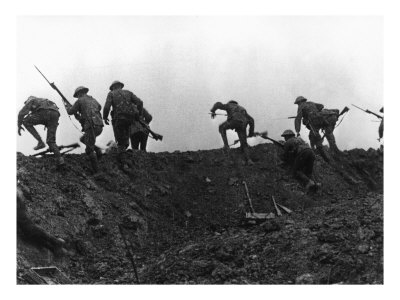

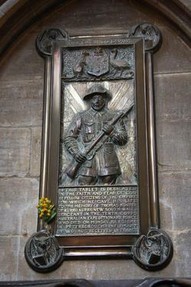 Sergeant Thomas Hunter made it out of the Somme, but he didn't make it home. The native of Kurrii Kurrii, New South Wales, died of his injuries, while lying in an English hospital bed.
Sergeant Thomas Hunter made it out of the Somme, but he didn't make it home. The native of Kurrii Kurrii, New South Wales, died of his injuries, while lying in an English hospital bed.






 St Tydecho's Churches in West Waleson 09/03/2014
St Tydecho's Churches in West Waleson 09/03/2014
 Goodies for an Outlander Premiere Partyon 03/06/2015
Goodies for an Outlander Premiere Partyon 03/06/2015
 Holocaust Memorial Day Interview with Rainer Höss, Grandson of Rudolf Architect of Auschwitzon 01/24/2015
Holocaust Memorial Day Interview with Rainer Höss, Grandson of Rudolf Architect of Auschwitzon 01/24/2015
 Romantic Valentine Gifts for an Outlander Fanon 01/16/2015
Romantic Valentine Gifts for an Outlander Fanon 01/16/2015


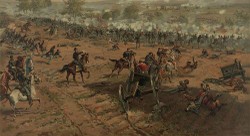
Comments
Re. The soldier stuck in a foreign land - no casualties were "airlifted," he would have been moved by motor transport and train.
I think it would break my heart to go there. In researching this article, I discovered that my great-uncle had been at Mametz Wood. He survived that, but not the war.
Thanks Jo. I have been to Thiepval & Mametz Wood amongst other places along the western front. Although i didn't see anything supernatural they were both tremendously moving places to visit. Not far from Mametz woods there are mini-cemeteries housing whole villages of 'pals' who joined the army together at the start of the war - all side my side still. hard not to choke up when you visit
Let's do this thing! I'll take you to a random field first, second or third, then somewhere in the middle will be the actual Marston Moor. Good luck!
I'd definitely be up for it, bring on the ghosties!
It would be quite difficult to do in the Somme, because it would be too easy to guess where you were. It's not like you can pull up somewhere in Northern France and just drive a couple of miles without anyone knowing they were in the vicinity.
It could easily be done at somewhere like Drumossie Moor (Culloden) or Naseby. It could definitely be done at Marston Moor. Main roads go straight through the middle of it, and people don't usually know they're even in the middle of an English Civil War battlefield (until they have to slam on their brakes for a ghostly cavaliar). Perhaps that's the way forward.
Any volunteers?
It would be interesting to see the blindfolded test; I'd imagine it to have drastic effects.
That's the big debate, isn't it? Are those people visiting the Somme bringing with them knowledge of the history, thus imagining those emotions? Or are they actually picking up the emotions that were left by those who fought?
The trick would be to take someone blind-folded and lead them into the middle of the Somme battlefield, then see if they pick something up.
Personally, I know that things are left behind in some places. I've been to Drumossie Moor.
With so many deaths it's not surprising that people feel something when they visit the site of the Somme battlefield.